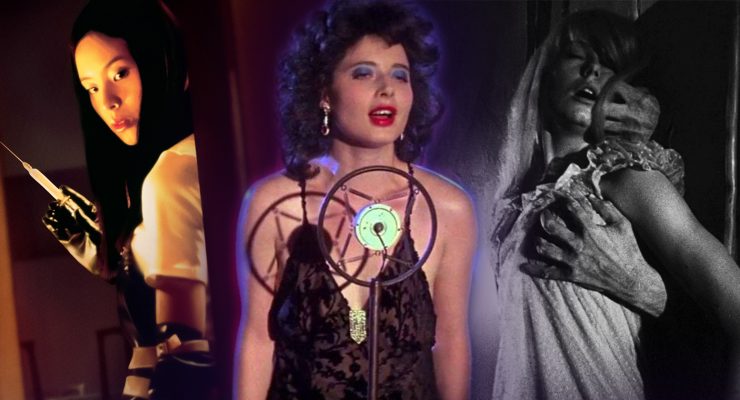Nitram, 2021.
Directed by Justin Kurzel.
Starring Caleb Landry Jones, Judy Davis, Sean Keenan, Essie Davis, and Anthony LaPaglia.
SYNOPSIS:
Events leading up to the 1996 Port Arthur mass shooting in Tasmania in an attempt to understand why and how the atrocity occurred.
The filmmaking team behind Nitram has made an effort to upfront state that in their attempts to understand the psychology of the 1996 Port Arthur single-person mass shooting that led to Australian gun reform, they have decided against reenacting such tragic violence. For director Justin Kurzel (who has made a name for himself exploring similarly dark subject material), telling this story with respect is of the utmost importance, so it makes sense that critics would be instructed to bring forth that same level of sensitivity when discussing this dramatization of actual events.
With that in mind, it’s also worth noting that the perpetrator is never named, as that would feed into the attention he sought. He is referred to as Nitram and played by Caleb Landry Jones as an uncomfortable concoction of damaged and unpredictably dangerous mental health concerns, high anxiety, social awkwardness, isolated weirdness, and a powder keg of rage just waiting for someone or some unfortunate life events to light the fuse of insanity. Undoubtedly, it is a career-best performance for Caleb Landry Jones, both in terms of his unnerving body language, sudden bursts of physical confrontation, and troubling playful games (such as grabbing onto a steering wheel and swerving a vehicle to antagonize the driver jokingly) that are enabled by those around him. In some cases, those characters suffer for different reasons, although working through their inner pain.
One of those characters is wealthy recluse Helen (Essie Davis), living inside a darkened estate surrounded by dogs. She perceives Nitram as misunderstood and sweet despite his many concerning eccentricities and oddball behavior. When the young man’s mom (Judy Davis) assures Helen that she doesn’t fully grasp what she is taking on by befriending him, there is a brief interval where it feels the woman might consider that before getting closer. The undefined connection between these two (it mostly feels like a solid platonic friendship bonding over pain) doesn’t so much shed light on what would drive Nitram to commit the unthinkable, but the dynamic does play out in a surprising fashion that doesn’t exactly help his mental state.
Falling in line with the appropriately cold and distant tone, Nitram’s parents also elicit an exhausted sense of frustration. Viewers are introduced to Nitram as a young boy hospitalized over an incident involving reckless fireworks usage, questioned on live TV about topics, including his burn marks. Eventually, the boy firmly asserts that he’s not done playing with fireworks. Flash forward to his young adult years in 1996, and he is still messing around with fireworks, seemingly with the intent to annoy neighbors or cause mayhem by handing some off to school children outside on recess. There’s a haunting image from cinematographer Germain McMicking depicting Nitram in focus with fireworks going off in front of his face, unfazed and practically welcoming whatever happens as he looks on with an empty yet piercing stare.
The point is that Nitram’s parents are the ones that have had to punish or reel in this behavior for years, except by now, it appears as if they have given up entirely. This especially takes a mental toll on Nitram’s father (Anthony LaPaglia), leading to at least one highly distressing physical altercation. It only makes sense that the final shot of this disturbing portrait of a mass murderer would linger on one of those parents.
Nitram (which is written by Shaun Grant) is not out to provide answers (and one of my biggest pet peeves amongst criticism is the thought process that trying to understand their depiction should come with solid solutions) beyond a denouncement of firearms, but there is and will always be something worthy and horrifically valuable in looking monsters in the face and trying to make sense of it. Certain areas and characters could be further elaborated on, but Caleb Landry Jones otherwise disorients and frightens for two hours in a complicated role that could have gone south for several reasons. When successfully executed with restraint, terror, and sensitivity, acknowledging and grappling with this tainted past comes with a purpose. By now, Justin Kurzel is pretty much the master at that.
Flickering Myth Rating – Film: ★ ★ ★ ★ / Movie: ★ ★ ★ ★
Robert Kojder is a member of the Chicago Film Critics Association and the Critics Choice Association. He is also the Flickering Myth Reviews Editor. Check here for new reviews, follow my Twitter or Letterboxd, or email me at MetalGearSolid719@gmail.com














